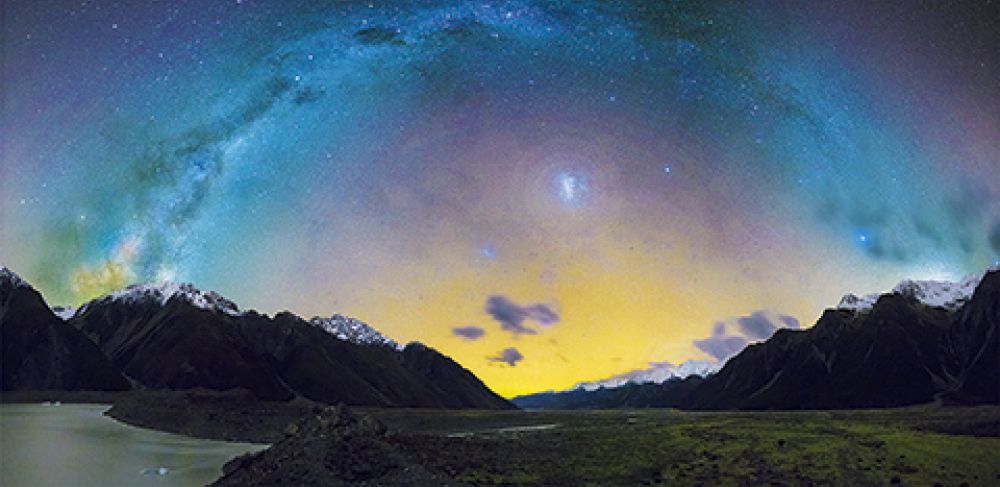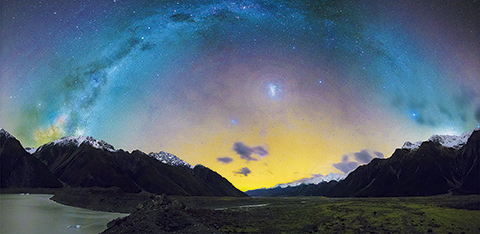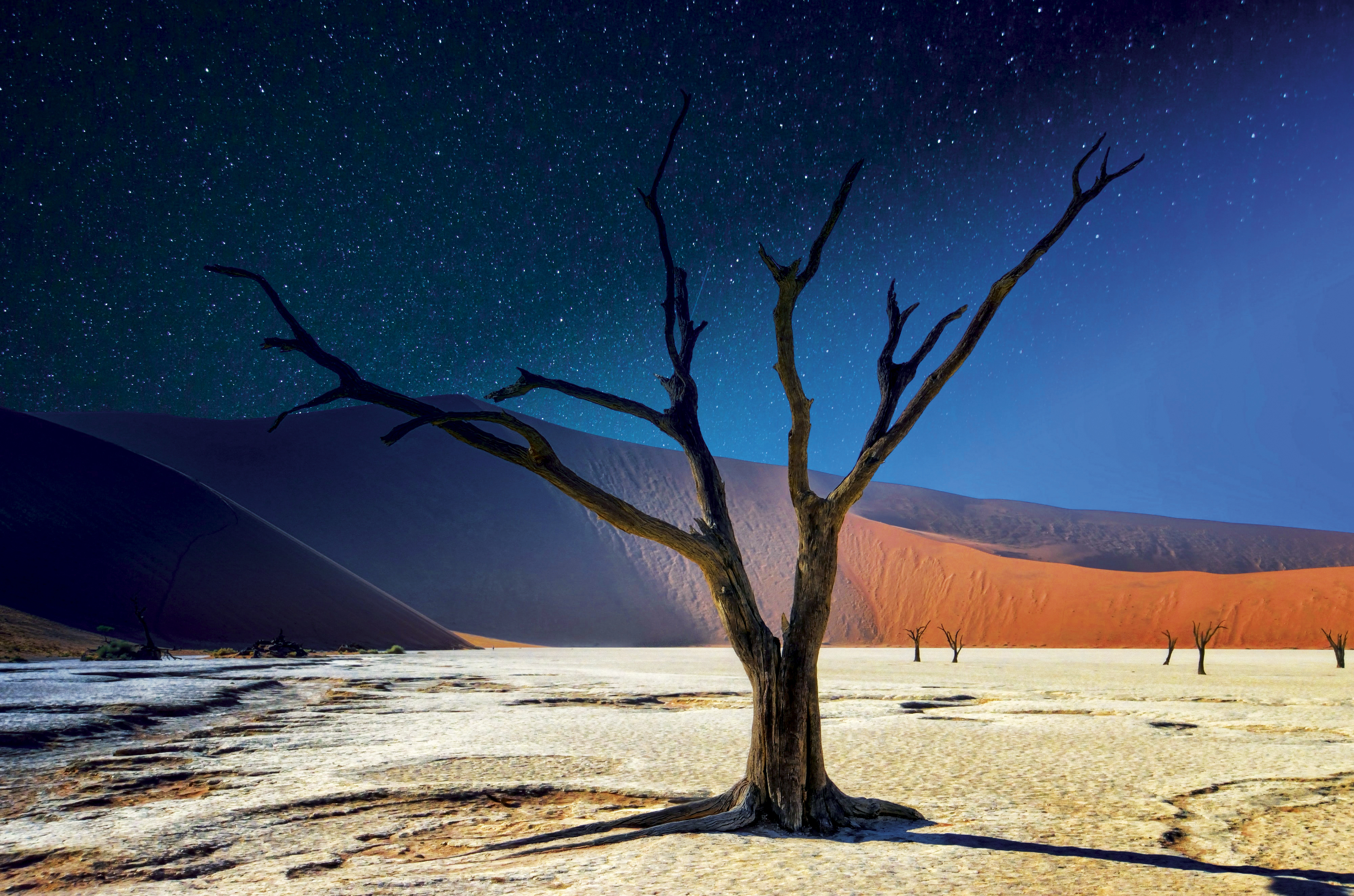New Zealand
Spectacular natural beauty
and New Zealand have always
gone hand in hand and the
same applies when the sun
goes down. It's then that a
light show begins, beamed
from distant galaxies and
supported by the most silent
of soundtracks, as it takes
place in an area described as being 'one of the quietest
places on the planet'.
The Aoraki Mackenzie
International Dark Sky
Reserve in the centre of the
South Island is the world’s
largest reserve of its kind
(4,367sq km), and the first to be awarded the highest
accolade of gold-tier status,
due to the pristine skies that are almost completely
free of light pollution. In this
sparsely populated part of
New Zealand there are only
three small communities: Lake
Tekapo Village (population
300), Twizel (1,100) and
Mount Cook Village (250),
although these numbers are boosted by visitors eager to enjoy the greatest of outdoors: a natural
playground of spectacular
glaciers, turquoise lakes and
grasslands and cloud-piercing
mountains. But another big
reason to go is to catch a
glimpse of the Southern
Cross, the Magellanic Clouds
(two dwarf galaxies that orbit
the Milky Way) and, of course,
our Milky Way itself, not to
mention the countless other
unforgettable skylights.
What's more, with the stars
playing such a big role in
Māori culture – star lore and
astronomy is part of daily
life, as once was the use of
stars for navigation – a huge
amount of effort has gone
into protecting the area from
light pollution, with controls
dating back to the 1980s.
mackenzienz.com



